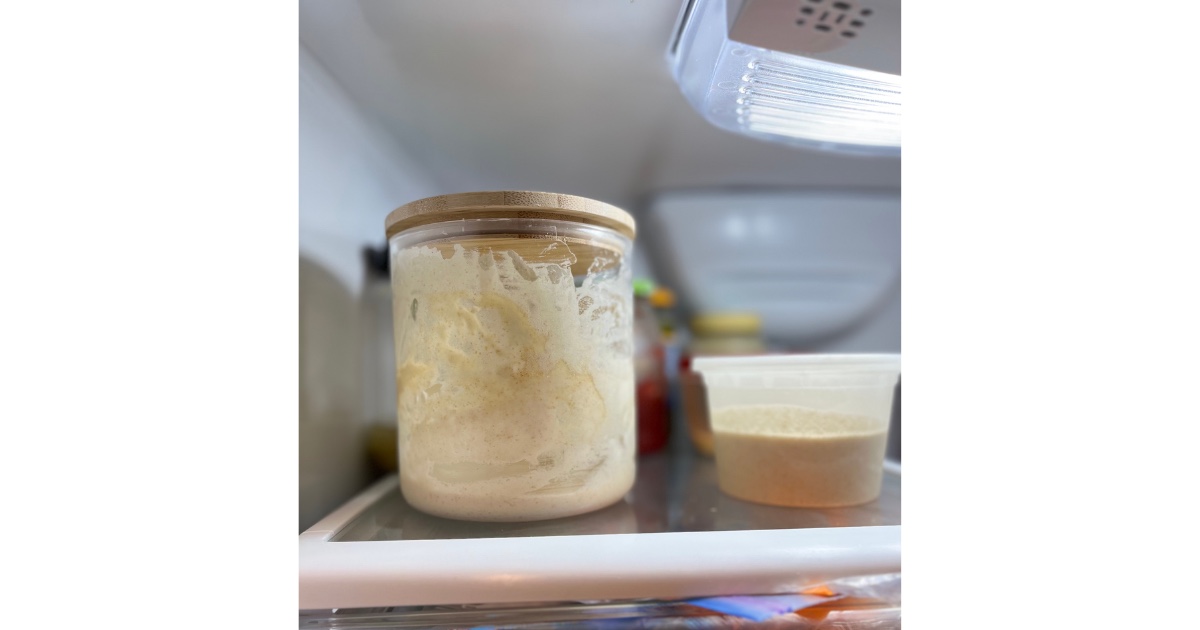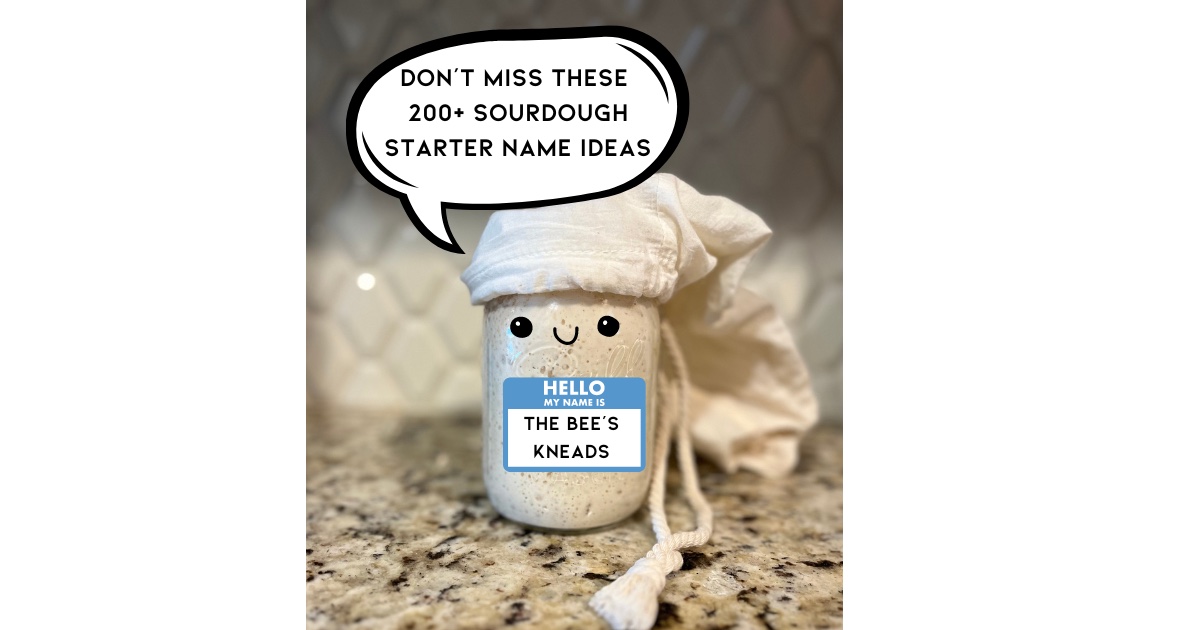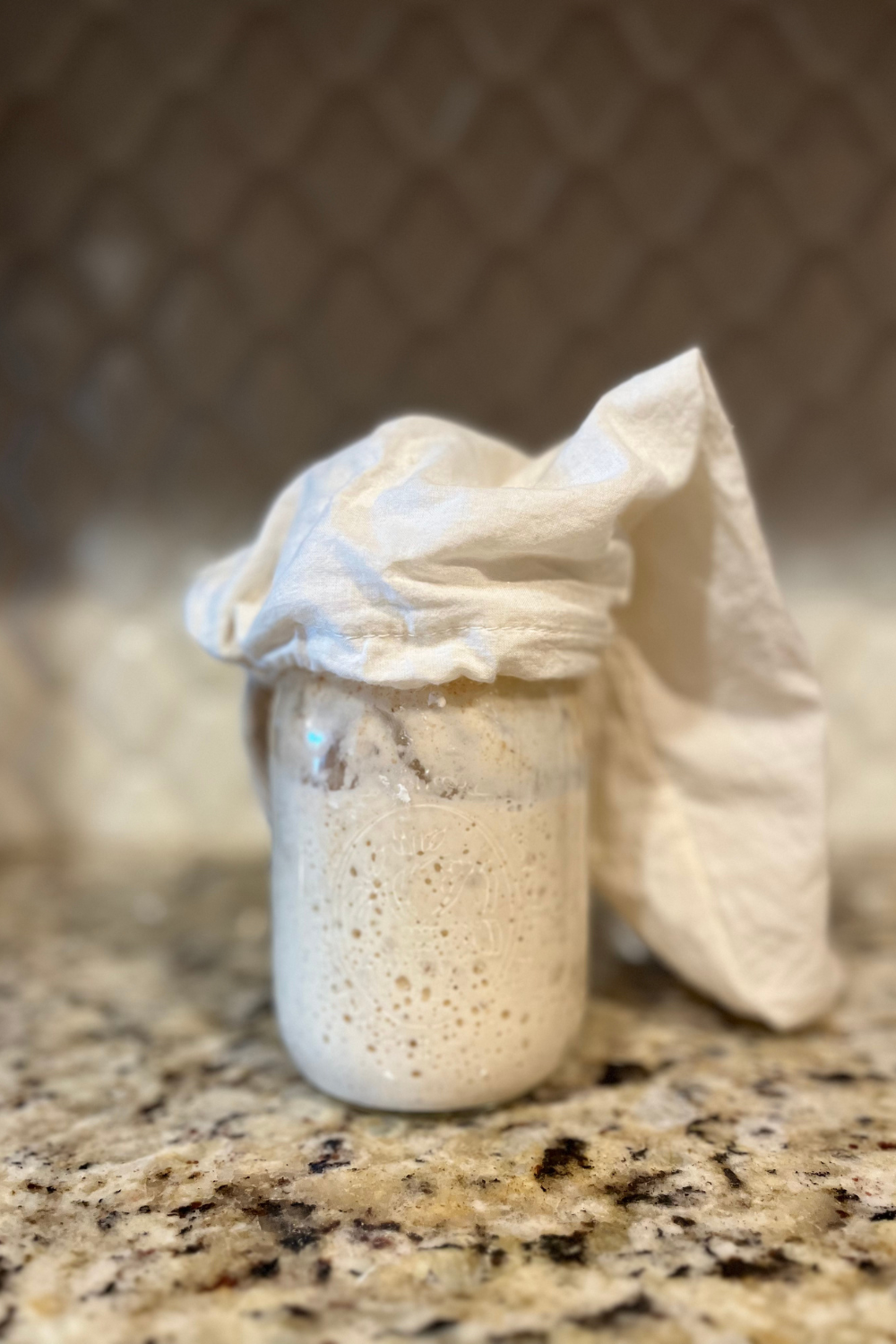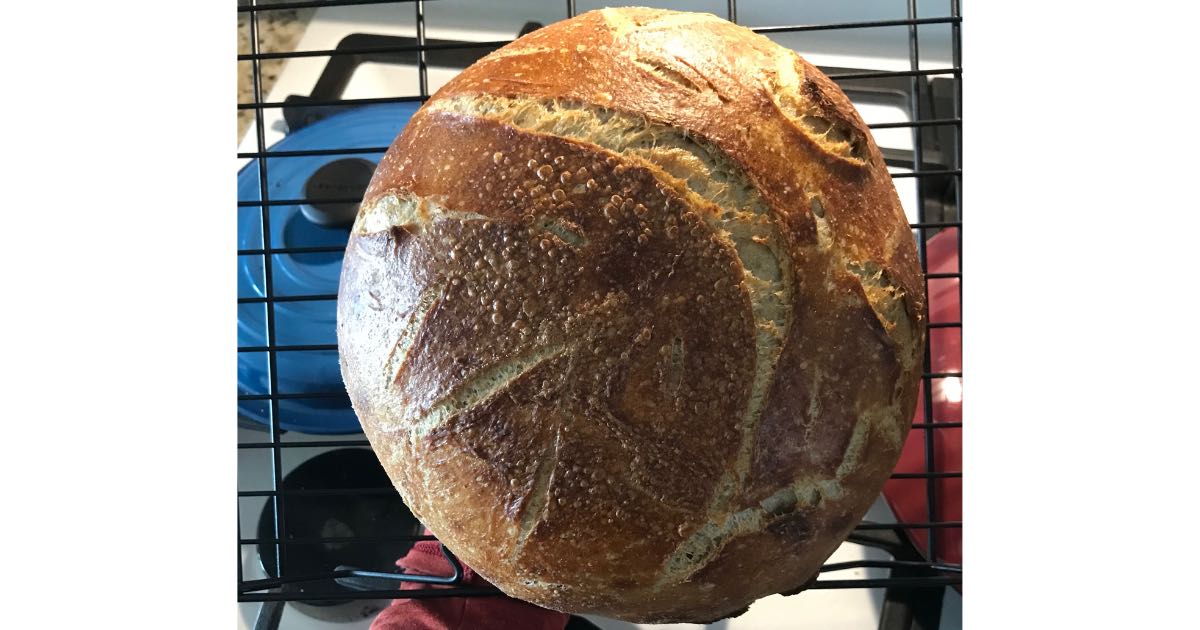The amount of sourdough bread myths is growing, but it does not have to. After all, rules are meant to be broken! If we learned anything in this sourdough journey, there are minimal rules which actually apply with sourdough.
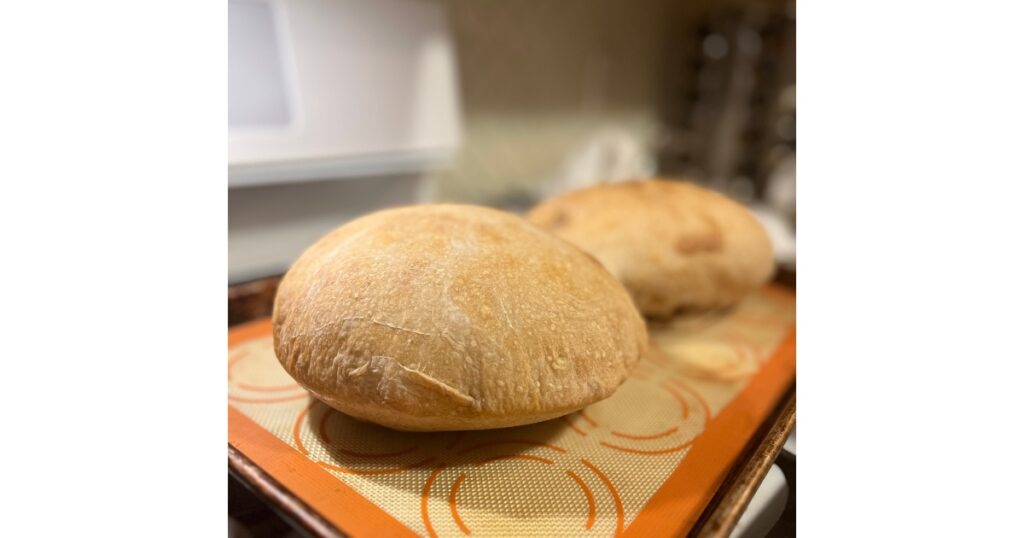
Unlike its counterpart, commercial yeast, sourdough starter gets a hard rap in the kitchen. Not only are there a lot of “rules” and misinformation around, there is a lot of unnecessary judgement, too!
We believe once you have the tools to start your sourdough journey, all you need to do is go for it. Some recipes might not turn out as expected, but it is all a part of the process.
Whether it is sourdough starter myths or sourdough bread myths, we will dive in and explore them together. These sourdough misconceptions are myths we hear time and time again. After all, we listen- but we do not judge!
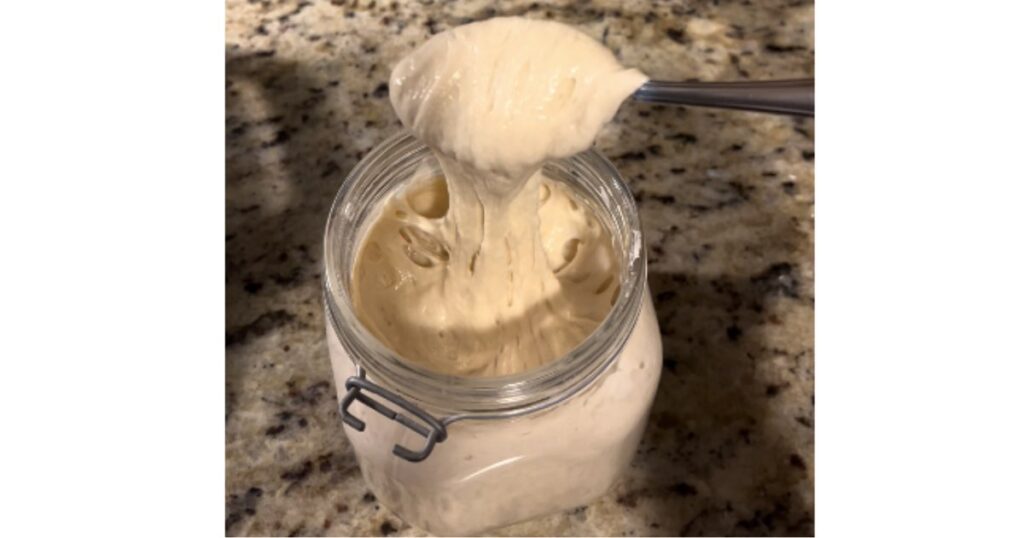
1. Sourdough discard belongs in the trash
Of all sourdough bread myths, we want to throw this one in the garbage! While this is true during the first week when you make a new starter from scratch, sourdough discard can be used afterwards in almost any recipe. To maintain acidity levels, sourdough must be discarded after each feeding.
Just be sure to save your discard to use in future recipes. And if you need inspiration, we have you covered with over 100 sourdough discard recipes! Many of these recipes require basic ingredients to make beautiful, tasty products.
2. A sourdough jar must be cleaned regularly
To ensure unnecessary bacteria growth, it is a good idea to clean your sourdough jar regularly. With that being said, if you continuously scrape your jar down to bare bones and keep it clean, it does not likely need to get cleaned as often as one with discard stuck on the sides.
3. Sourdough starter will break your pipes if you clean your jar in the sink
People believe sourdough starter will turn to cement when cleaning your sourdough jar, especially if you use hot water to scrub it in the sink. Like any food (including those with high fat content), too much of it is not a good thing. By ensuring you add plenty of water to your discard, your pipes should be fine! (Disclaimer- we are not plumbers, know your kitchen sink!)
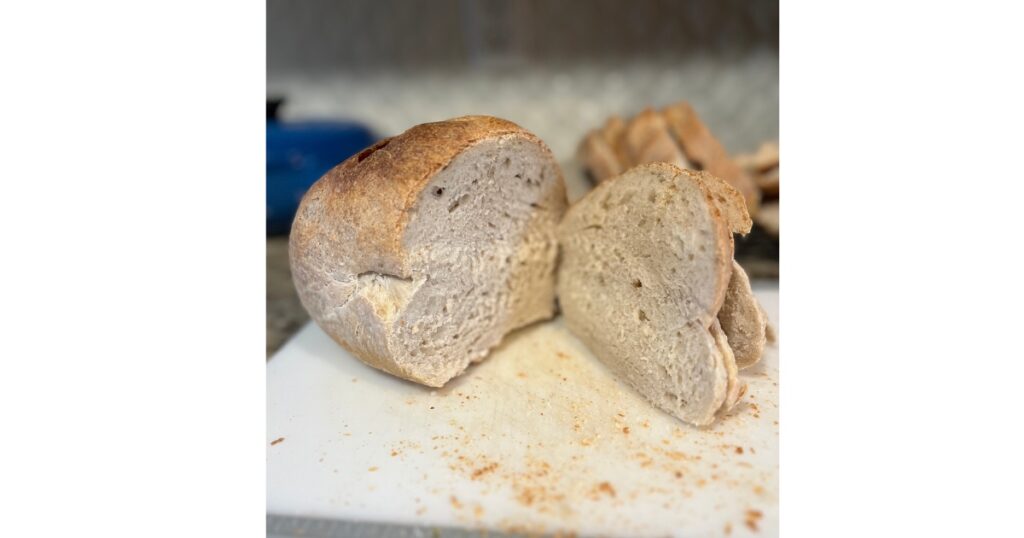
4. Sourdough bread needs big holes to taste good
Sure, more holes in a slice of bread means more room for butter- but have you ever had an undercooked loaf before? Be sure to pop the big air bubbles before baking a loaf or it might not turn out as expected.
5. Never use metal to stir your sourdough
This sourdough starter myth is one beginners often fall victim to. We measure with metal cups and spoons, mix with a metal whisk and more. It has not impacted the starter, yet!
We do store our sourdough starter in a glass jar and allow items to bulk ferment in stainless steal bowls (with a lid). This is our personal preference and one of the sourdough bread myths we have busted again and again.
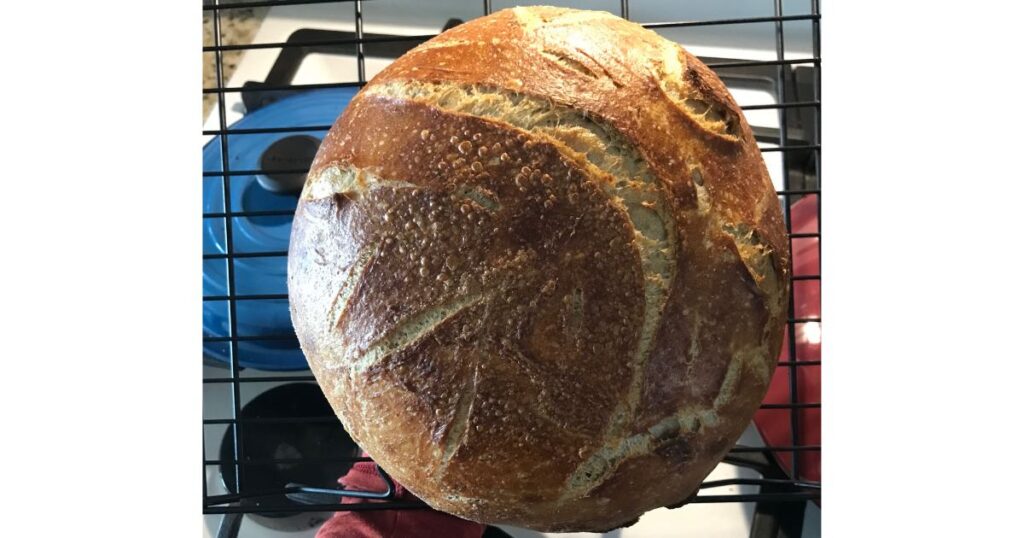
6. You have to bake bread in a preheated oven and in a preheated dutch oven
While a good rule of thumb is to preheat your Dutch oven if you are putting it into high temperatures with cold bread straight fr the fridge, you do not need to preheat the oven before baking. Sometimes this even gives more oven spring!
7. You have to follow a schedule for sourdough to work
We will teach you all the ways to make sourdough fit your schedule, not the other way around. Outside of making sure a dough doubles when it needs to, there are ways to slow the fermentation process, the fridge is your friend!
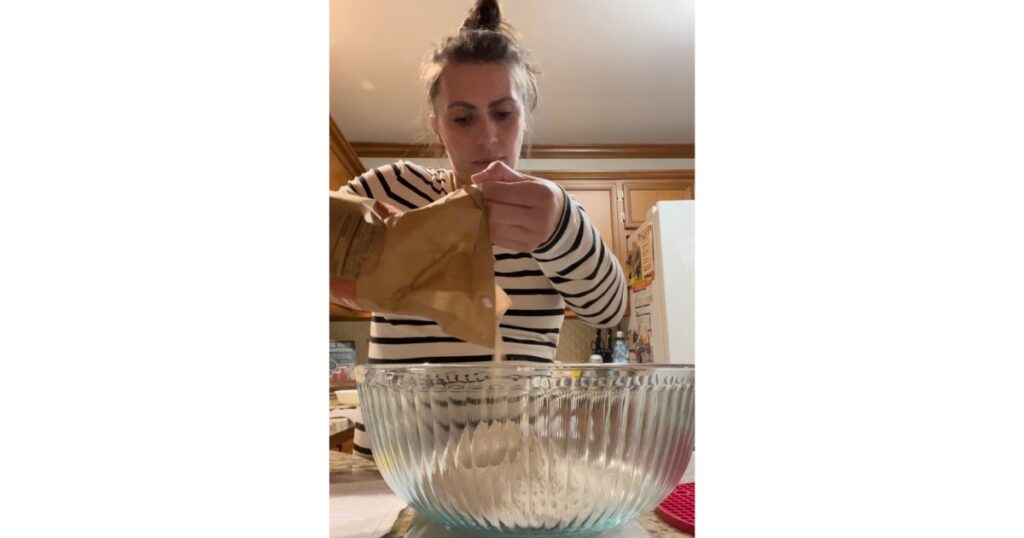
8. You do not have to use a scale for a recipe to turn out
While some recipes turn out better with accurate measurements, it is possible to be free hand recipes or use measuring utensils
9. You have to feed your sourdough starter every 24 hours or it will die
Contrary to popular opinion, you do not need to feed your starter every 24 hours for it to stay alive. While it does require regular feedings, you can feed it more or less often. Daily feedings are not a requirement.
If you go longer between feedings (perhaps a weekly feeding schedule), consider dry feeding or placing it in the fridge as a method of long term storage. This sourdough starter rule is definitely a myth!
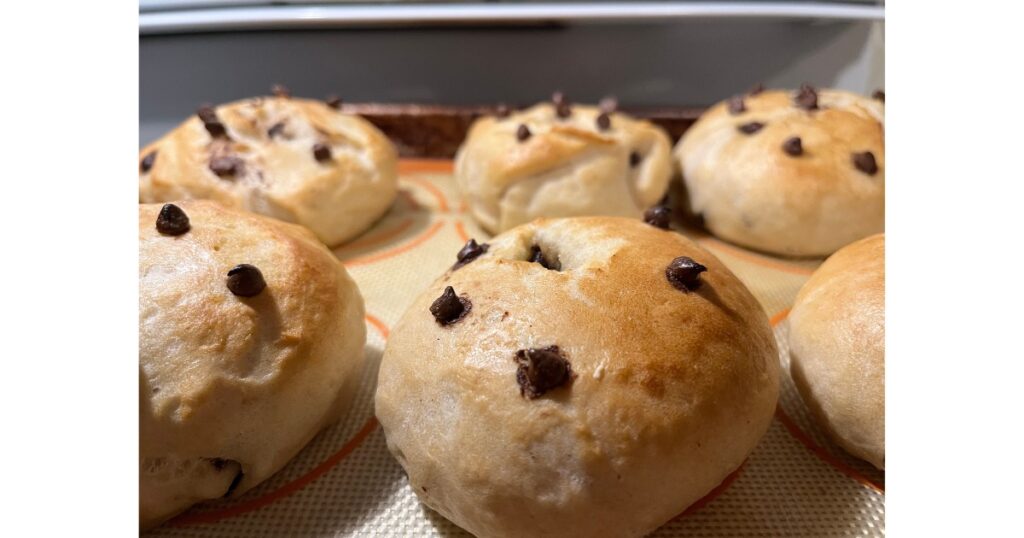
10. Only active starter can be used within recipes, especially bread.
You can absolutely use sourdough discard or starter straight from the fridge. It does not need to be used a peak levels, though the results may vary on speed of fermentation and finished product.
11. Feed your starter with only unbleached flour (and filtered water)
If you have flour, use it! However, note the type of flour you use within recipes and to feed your starter will alter the wild bacteria culture produced as an end result (not necessarily a bad thing!). Chlorinated water can be disruptive to a sourdough starter, though.
12. Sourdough bread is hard to make
One you have it down, sourdough bread is a relatively easy process. Because there is time between stretch and folds, along with fermentation periods, it can be an easy way to make bread for your family on a schedule which fits your own.
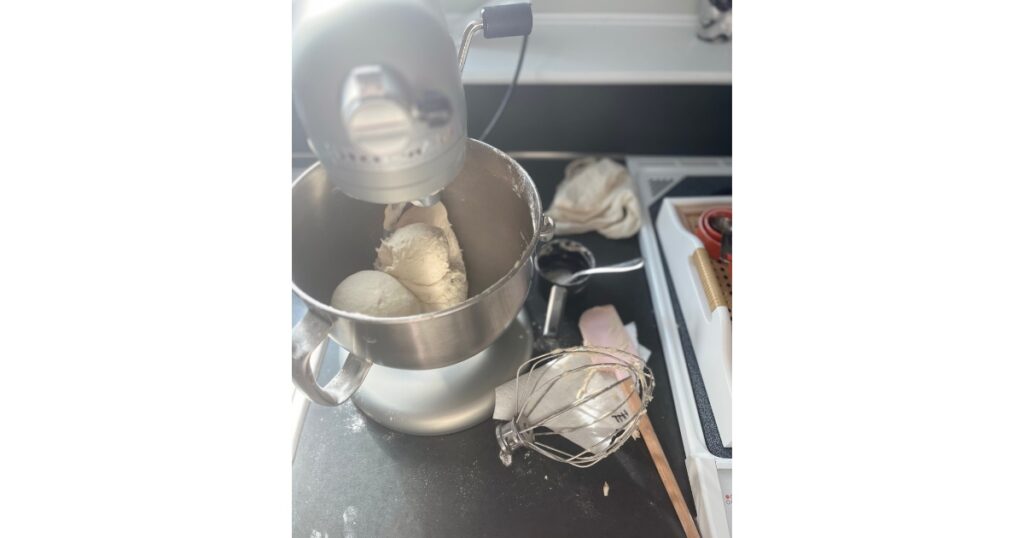
13. If a recipe calls for using a stand mixer, you can not replace it with stretch and folds
Any recipe requiring a stand mixer to knead the dough can be kneaded by hand. It might take longer to produce the gluten formation, especially if the recipe is an enriched dough with butter and eggs. However, it will still work (and you will get a great arm pump as a result!)
14. You must keep a large amount of starter on hand at all times
We love a low maintenance starter. We prefer to keep a small amount of starter on hand so we have less waste. When you know you are going to cook- increase your starter by the amount you need for a recipe.
The ratio for feeding sourdough is quite simple. To understand how much to feed sourdough starter, consider the amount of starter a recipe calls for. If a recipe calls for 4 ounces of starter, feed your starter equal parts water and starter (IE 2 ounces of water and 2 ounces of flour). The leftover starter is called ‘carryover starter’ and will be what remains going forward.
15. Sourdough loaves must be scored before going in the oven
You do not need to score your sourdough loaf before placing it in the oven. If you do not score a sourdough loaf, it will naturally break at the weakest point of surface tension. (Which is actually quite beautiful!)
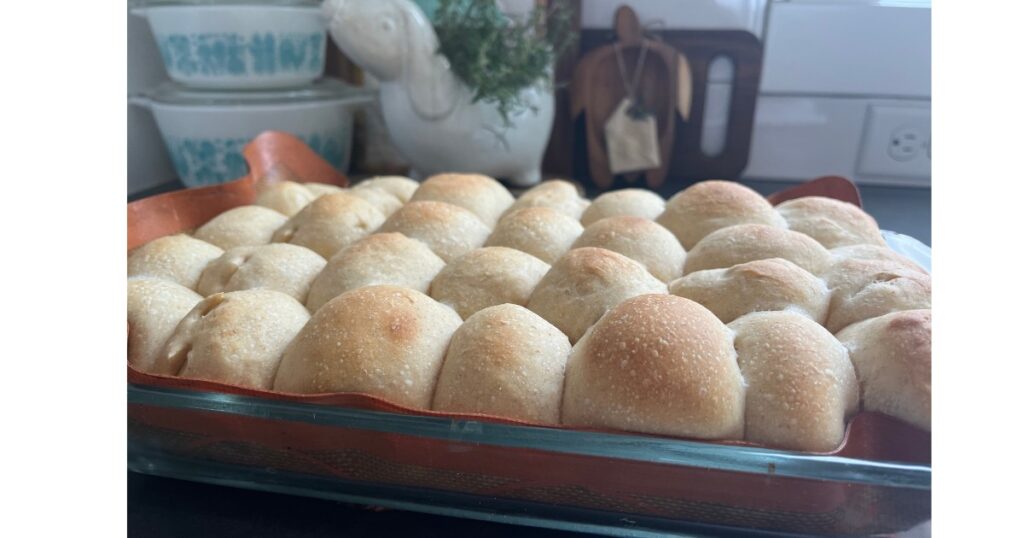
16. Sourdough starter needs to be at peak to make good bread
One of the most important of the sourdough bread myths is this. Please take it with a grain of salt.
When you establish your sourdough starter is ready, you can make sourdough goodies without starter at the peak level. Sourdough starter does not need to be at peak levels for bead to rise.
If your sourdough starter is able to ferment when combined with more flour, it will produce the baked good you intend. It may become more sour with time, but a 100 year old starter vs 10 week old starter can produce similar results.
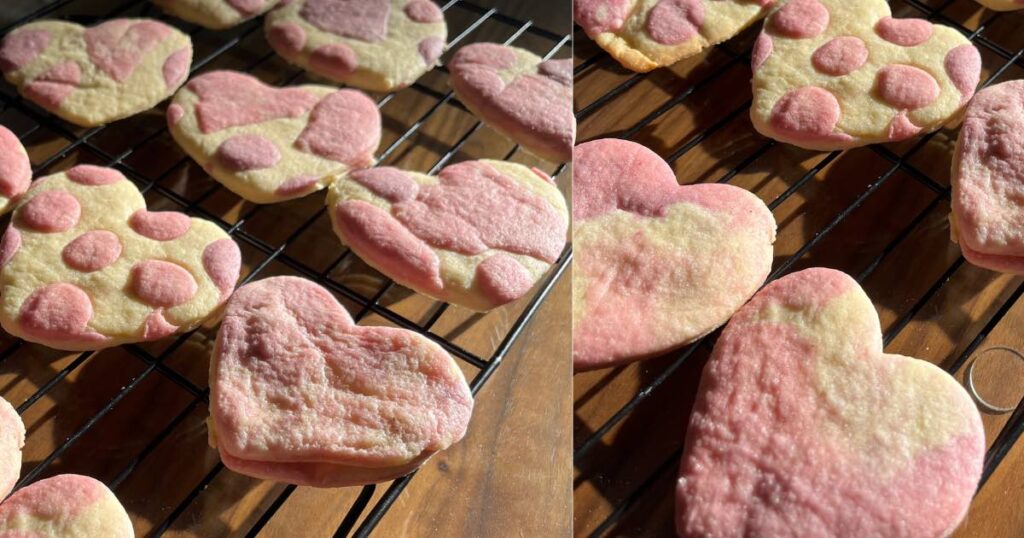
17. Sourdough starter is good for making bread only
This is not true as you can see from our website. We use sourdough discard in a variety of recipes from homemade sourdough bagels to sourdough almond croissant cookies. You can even make sourdough pizza crust or dinner rolls with sourdough starter. We love the added benefits of fermenting grains!
18. Where your sourdough starter is from matters
The difference between tastes of sourdough bread and other sourdough products comes from your flour blends and bacteria in your air. All loaves of bread will taste different when compared to one another, simply by the hands mixing it.
A San Francisco starter will not taste the same if you live in different areas because the bacteria culture comes from the air around your home.
19. Sourdough breads are all sour
This sourdough bread myth is not true. What is true – i s sourdough bread can be sour. It is easy to make a sourdough loaf more sour by adjusting variables including fermentation time, how acidic sourdough starter is and what flour is used within a recipe.
However, there are other loaves of bread like sourdough english muffin toasting bread which are not sour at all! It is a personal preference when it comes to the tangy flavor and how much people like to taste.
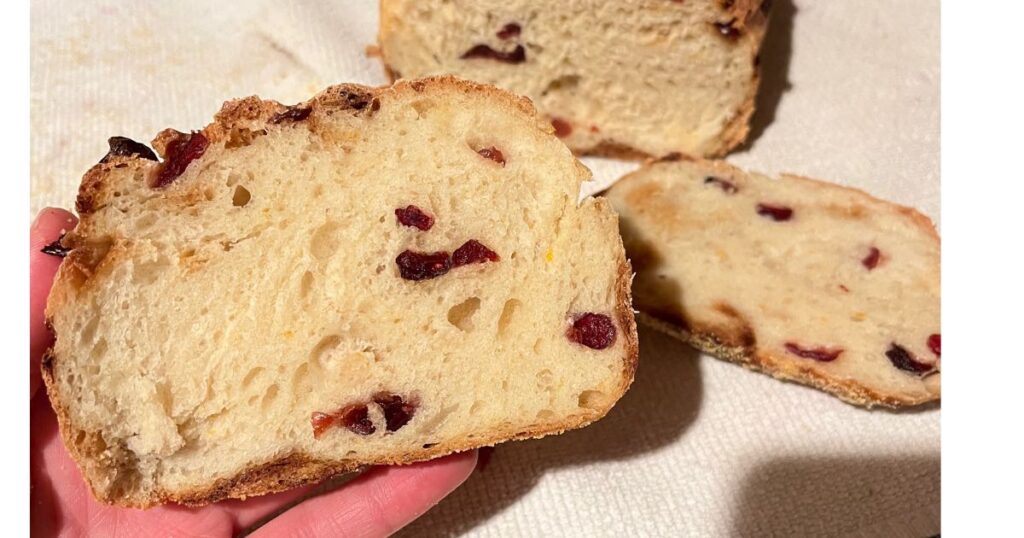
20. Sourdough bread is naturally gluten free
I turned to eating sourdough bread after being gluten free for 14 years as it does not make my stomach react like a slice of white bread. While gluten content is reduced due to the process of fermentation, sourdough bread is not gluten free.
To make bread with a lower glycemic index (which also results in less gluten content) – you will want to ferment your bread for longer. As a best practice, wait at least 24 hours (up to 72 hours) before baking.
It is also possible to make a gluten free starter to make gluten-free sourdough bread. The process is similar to beginning a starter from scratch, but the type of flour used to maintain the starter will be different.
21. Sourdough can not be made with commercial yeast
If you are wondering ‘can you add yeast to sourdough starter’ or can you add yeast to sourdough baked goods, the answer is yes – but you do not have to. Wild yeast is the base of sourdough starter.
As it sits, the fermentation of starter combined with flour causes carbon dioxide (a gas) to release. Because of this, if you allow a recipe to bulk ferment it will rise when cooked.
However, there are many good sourdough discard recipes contain additional leavening agents, like commercial yeast. While it can be done, some homemade baked goods are not as fluffy when compared to those with commercial yeast.
For example, sourdough hoagie buns and sourdough hot dog buns may need an additional boost from commercial yeast to taste similar to the store bought version.
Sourdough purists may say something something made with commercial yeast / baker’s yeast is not ‘sourdough’, but this is simply not true. It just has a little extra help from a friend!
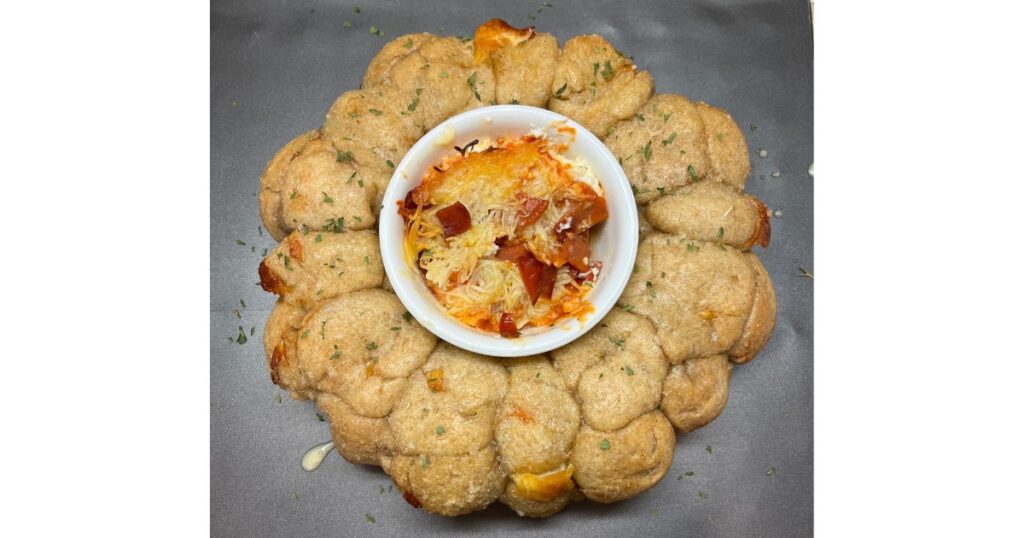
22. Sourdough bread is expensive to make
Sourdough bread is not expensive to make! Though it can be expensive when purchased from a local market or bakery, the time and energy which goes into making sourdough influences the cost.
Flour, water and salt are the three basic ingredients to make sourdough bread. If you use other types of flour (white flour, fresh milled whole grain flour, whole wheat flour, bread flour, gluten-free flours, spelt flour, rye flour, etc.), they can have differing costs. However, it is typically costs less than $1 to make a loaf of your own homemade sourdough bread!
23. The float test is the only way to gauge a sourdough starters maturity level
There are multiple ways to test sourdough starter maturity in the early stages after making a sourdough stater from scratch. Between the float test, rubber band test and whether or not it has doubled in size after feeding, these are all ways to test if a sourdough starter is ready for making bread.
A mature starter will pass one of these tests before it is ready to make bread. Someone with a new starter may need use multiple tests to feel confident before baking their first loaf of sourdough bread.
24. All sourdough starters look the same
Sourdough starter can have varying looks depending on how close it is to peak levels, the type of flour which is used and the amount of wild yeast present. It can also change based on what kind of sourdough starter you make (there are over 14 different kinds of sourdough starters).
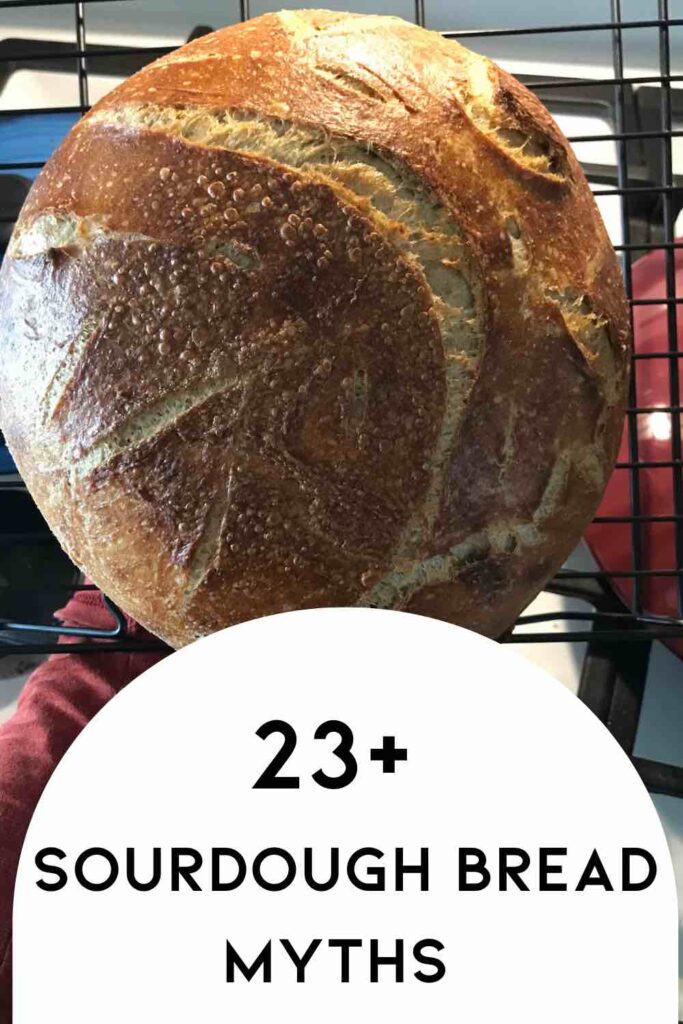
And just like that, we have crushed these sourdough bread myths! Which sourdough bread myths did fall for during your sourdough journey? Let us know your other common misconceptions in the comments below!

